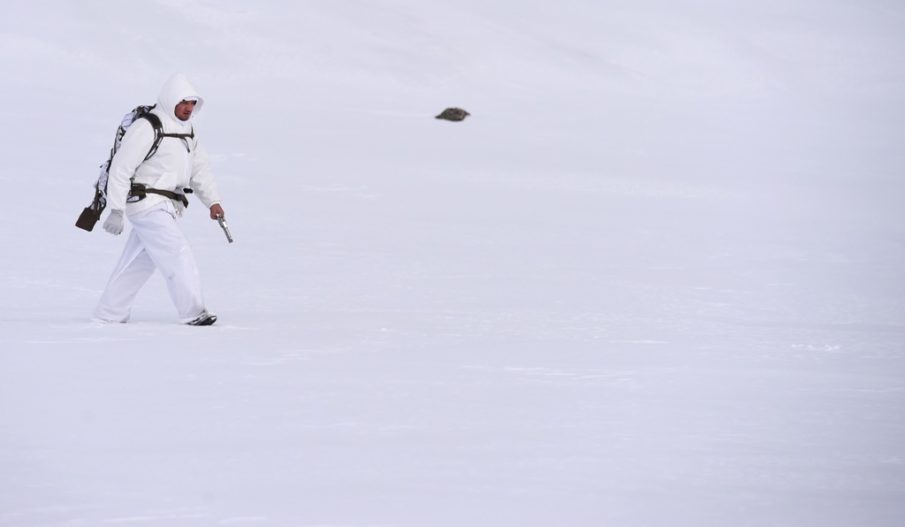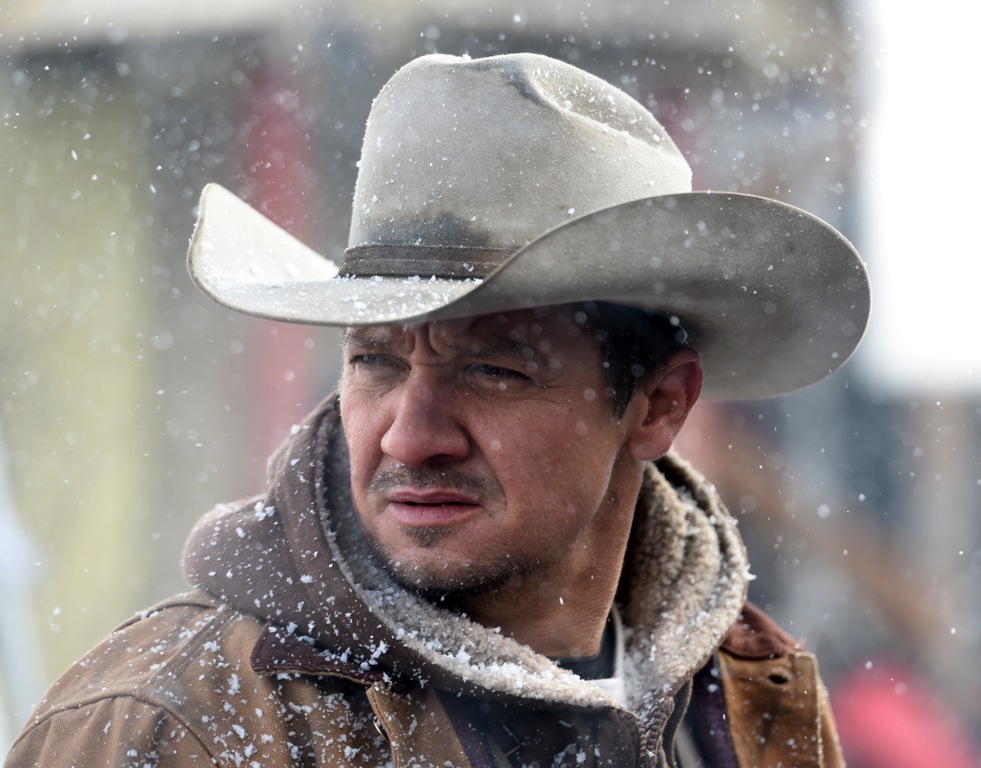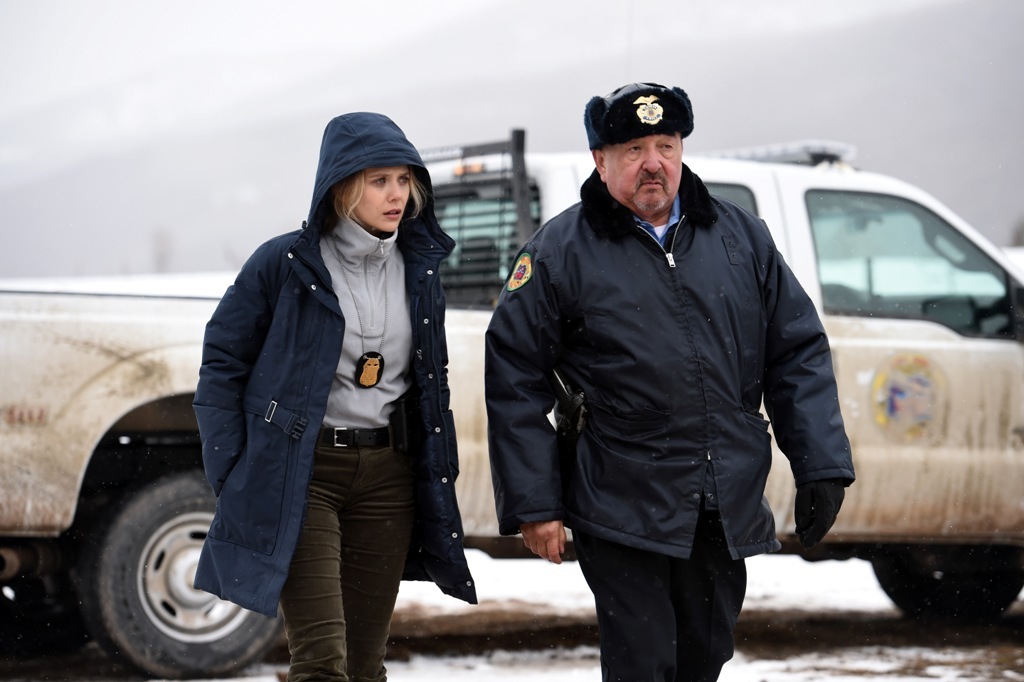“Wind River” is a film written and directed by Taylor Sheridan, who also wrote “Hell or High Water” and the first installment of “Sicario.” It stars Jeremy Renner, Elizabeth Olsen, Graham Greene and Jon Bernthal, all of whom deliver excellent performances.
The story opens as a tracker for the Fish and Wildlife Service, Cory Lambert played by Renner, discovers the body of a Native American woman in the snow, far out in the Wyoming wild. The FBI sends an agent to discern whether or not it is in their jurisdiction, and they coordinate with tribal police to get to the bottom of the crime. While the story is set up like a traditional who-done-it, there is nothing traditional about it at all. It dives into some very visceral, raw themes like grief, loss and strength.
First of all, I would be remiss if I didn’t mention the excellent portrayal of combat in this movie. While it is not an action film per se, the few scenes that do portray gunfights shocked me both in their accuracy and intensity. Like real life, they aren’t long, drawn out bouts of heroes and villains trading automatic fire. Gunfights are staccato, messy and over in seconds, followed by eerie silences and the the labored breaths of whoever won.
I also have to give special credit to Elizabeth Olsen for her handling of these scenes — she masterfully portrays an inexperienced but well-trained FBI agent; her shoot-out scenes are what makes this film excellent from a combat perspective. I wouldn’t call these parts entertaining in the sense that “Guardians of the Galaxy” is entertaining, but they certainly snatched the breath from my lungs. They are eerily rooted in reality.
If I had one tactical complaint with this film, it would be the depiction of one particular rifle, and how when it shoots people they go flying back a few feet. Of course, due to Newton’s Third Law of motion, a person may be slightly knocked backward as they are struck by a bullet, but they are definitely not going to go flying in any direction — even if they’re taking a .50 cal round straight to the chest while wearing a bullet-proof vest. However, this is an insignificant detail compared to the film’s victories, both from a tactical standpoint and a storytelling one.
One of the major themes of this movie is the sheer power and magnitude of nature. Americans often forget that, even in their own country, they are just passengers in a world dominated by nature. “Wind River” is set in a somewhat rural area of Wyoming, and many of its scene dive out into places — that exist in real life — where people will not survive the night if they’re stuck outside. It’s a sobering reminder of the fragility of human life, and the brutality of Mother Nature.
The film tackles the theme of grief and how to deal with it (while recognizing that everyone deals with it differently). I have found that, regardless of the specific method, grief has to be met head on. Our society — especially our warrior culture — often encourages men to shy away from this, as if confronting one’s emotions is feminine in nature or a sign of weakness. “Wind River” shows how it takes a very rough type of strength to do stare these dark, terrible emotions of loss and despair right in the face and to deal with them, and masculinity or femininity has nothing to do with it.
Cory says that,
If you shy from the pain of it, then you rob yourself of every memory of her, my friend. Every one. From her first step to her last smile. You’ll kill ’em all. Take the pain — take the pain, Martin. It’s the only way to keep her with you.”
Again, this isn’t a call for people to expose themselves in a moment of weakness. The same character says, “Wolves don’t kill unlucky deer. They kill the weak ones.” To deny your grief and suffering is to deny your own humanity — the assertion in the film is that it takes strength to take a good, hard look at yourself and face whatever you find head-on.
The more prominent theme is that of missing women from the Native American community. This is a subject I know very little about, but from my (limited) perspective, the film seemed to take a very political issue that has real, human ramifications, and strip away all of the divisive politics. Movies that achieve this seem rarer these days, but it’s important if filmmakers want to seriously discuss issues that are close to their hearts. I, for one, have been inspired to learn more on the subject since watching this.
“Wind River” has the type of profundity that will have me watching it periodically for a very long time. It’s certainly not a light movie that you put on with the kids, nor is it all that great of a choice for a casual date night — but if you want to be pushed emotionally and intellectually in the midst of a thrilling, tense detective-type story, then this is your movie.
Images courtesy of The Weinstein Company.












COMMENTS
You must become a subscriber or login to view or post comments on this article.